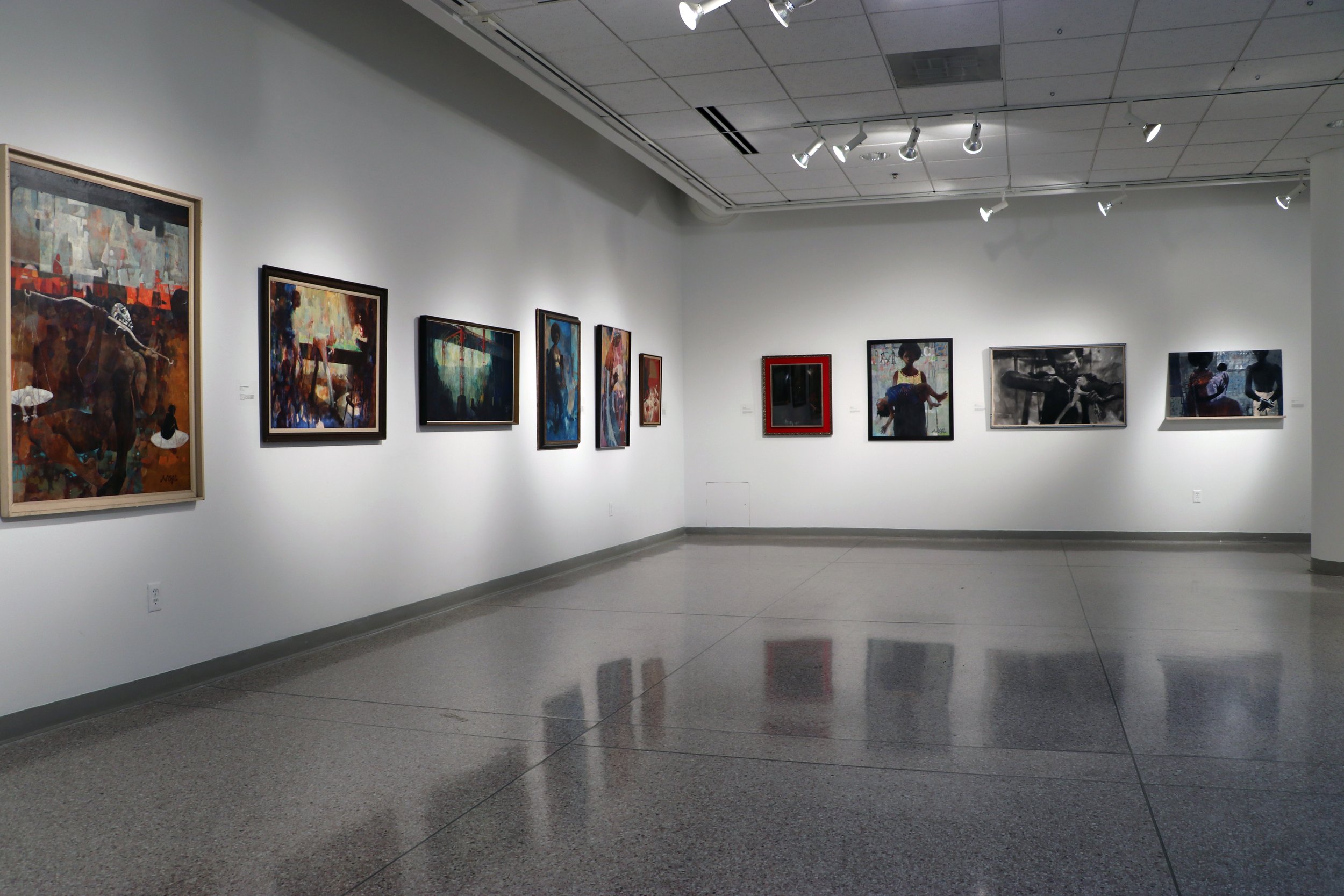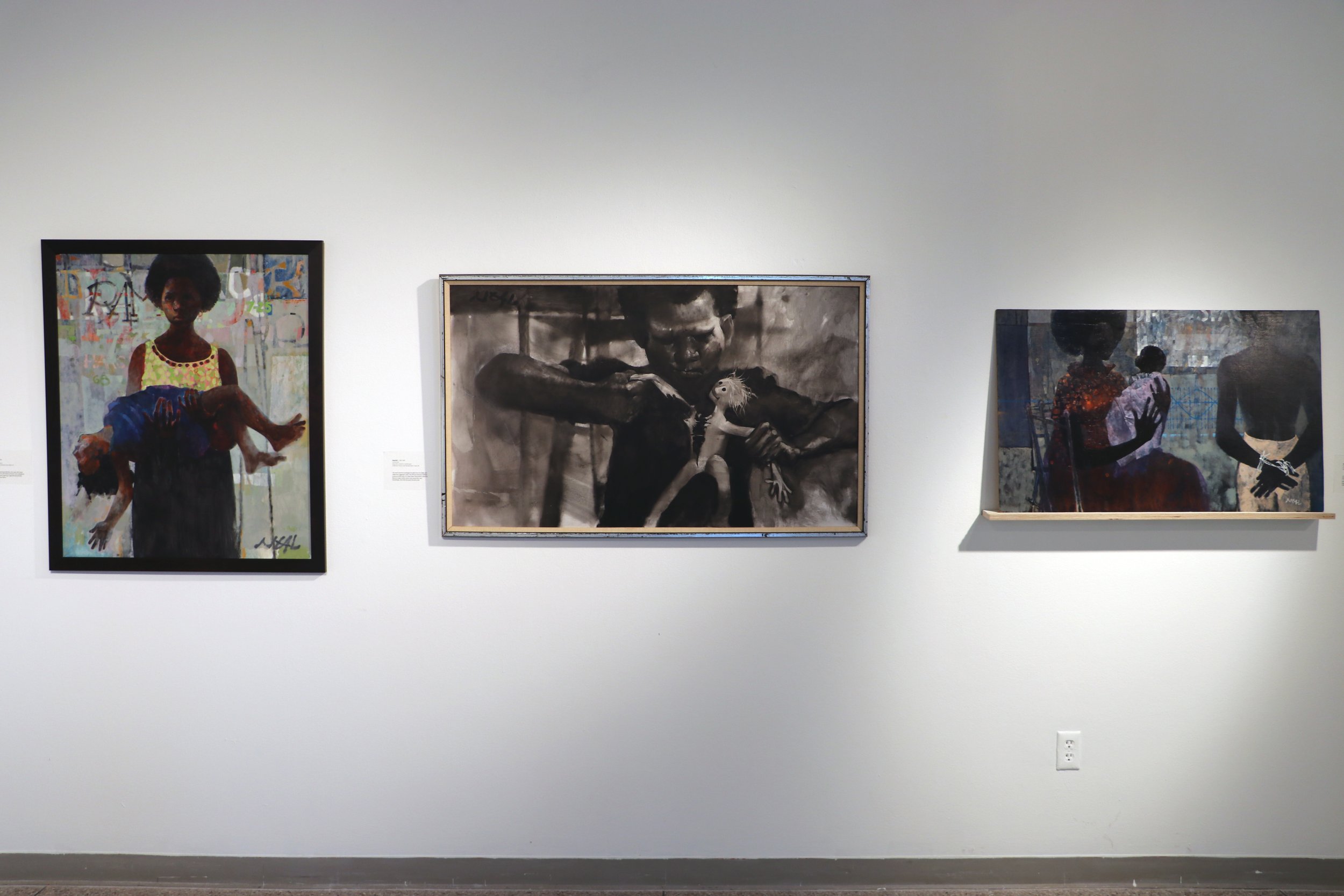Harold Neal and Detroit African American Artists
1945 through the Black Arts Movement
Detroit African American painter Harold Neal created some of the most forceful artistic statements of the Civil Rights, Black Power and Black Arts Movements. Focusing on Neal, Harold Neal and Detroit African American Artists: 1945 through the Black Arts Movement explores the efflorescence of Detroit African American art in the 1950s, 1960s and 1970s and the impact of the aforementioned movements on Detroit art.
Over the last twenty years, numerous scholarly publications have treated the work of African American artists of the 1950s, 1960s and 1970s. At that time, Detroit was the fifth largest city in the country with a large African American population and a vibrant Black arts scene. Nevertheless, the aforementioned publications fail to discuss Detroit African American artists. This exhibition focuses on the life and work of Memphis born Harold Neal, among the most talented and thoughtful of these artists. It also explores other Detroit African American artists, including Neal’s predecessors Hughie Lee Smith and Oliver LaGrone, who greatly influenced his career; his contemporaries Glanton Dowdell, Charles McGee, Jon Onye Lockard, Henri Umbaji King, LeRoy Foster and Shirley Woodson, and his successors Aaron Ibn Pori Pitts and Allie McGhee, who were greatly impacted by his work. Additionally the book addresses the rift in the Detroit African American art community in the wake of the Black Power/Black Arts Movements. Neal, like other artists of the Black Arts Movement, felt that art should speak directly to the experience of African Americans using African American figurative subjects, while others artists, like Charles McGee, sought to compete in the white art world, working in the abstract, non-objective styles then dominant in New York galleries.
The result of some ten years of research, this exhibition and its accompanying fully illustrated catalogue presents a view of post-World War II African American art history essentially unknown to other scholars. It expands our understanding of Detroit African American art first set forth in the author’s 2009 publication Energy: Charles McGee at Eighty Five. For this later project, Dr. Myers conducted extensive interviews with artists, scholars, friends and family members of the above mentioned artists. Most of their works remain in private collections, and Dr. Myers surveyed many of these, some in states outside of Michigan, in order to select the highest quality works. The exhibition and catalogue are based on hundreds of contemporary articles, published in Michigan Chronicle, Detroit’s African American newspaper and in other local newspapers, as well as on other hard-to-locate archival materials. Dr. Myers assesses these Detroit artists in relation to their peers in other major metropolises such as New York, Chicago, Los Angeles/San Francisco, thus establishing that Detroit artists were significant contributors to African American art in the 1950s, 1960s and 1970s.
Following the closing at WSU, Harold Neal and Detroit African American Artists will travel to the Marshall M. Fredericks Sculpture Museum at Saginaw Valley State University and be featured from February 1 through April 14, 2022. https://marshallfredericks.org
The exhibition and catalogue were organized by Eastern Michigan University’s College of Arts and Sciences and supported by Michigan Humanities. For more information regarding the catalogue, please visit, https://tinyurl.com/25npcsmm.
Title unknown, date unknown
Harold Neal
oil on board
Neal Family Collection Detroit


















